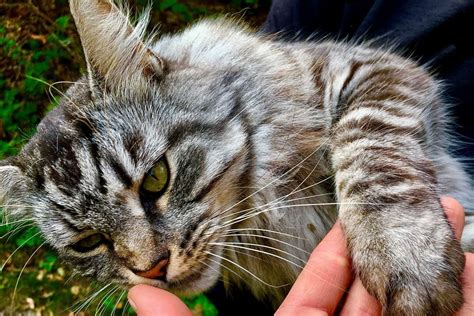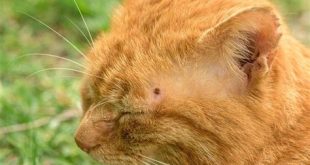Determining the age of a cat can sometimes be a tricky task, especially if the cat is adopted or found as a stray. However, there are several methods that can help you estimate your cat’s age based on their physical characteristics, behavior, and overall health.
-
Check the Teeth
One of the most reliable ways to estimate a cat’s age is by examining its teeth.- Kittens (0-6 months): At birth, kittens have no teeth. By around 2 weeks, they start to grow their baby teeth, which are replaced by adult teeth by about 6 months.
- Young Adult Cats (1-2 years): Adult cats will have all their permanent teeth by 6 months of age. These teeth should be clean and white, with no signs of wear.
- Middle-Aged Cats (3-6 years): The teeth of middle-aged cats will show some wear and may start to accumulate tartar.
- Senior Cats (7+ years): Older cats typically have more worn teeth, yellowing, and even missing teeth. Signs of dental disease may also become more noticeable.
-
Look at the Eyes
The appearance of a cat’s eyes can also provide some clues to their age.- Kittens and Young Cats: Kittens have bright, clear eyes, and their pupils are usually large and round.
- Older Cats: As cats age, their eyes may develop a cloudy or bluish appearance due to a condition called lenticular sclerosis, which affects older cats and doesn’t interfere with their vision.
-
Assess Their Coat and Fur
A cat’s coat changes as they age.- Kittens and Young Adults: A kitten’s fur is typically soft, smooth, and shiny. As they grow, their coat remains relatively healthy and glossy.
- Older Cats: As cats age, their fur may become coarser or less shiny, and they may start to shed more or develop thinning patches of fur.
-
Examine Their Activity Level and Behavior
The behavior and activity level of a cat can offer insight into its age.- Kittens (0-1 year): Kittens are extremely playful and energetic, often engaging in spontaneous bursts of activity.
- Adult Cats (1-7 years): Adult cats are more balanced and tend to have a consistent activity level, though they may still enjoy playtime, especially with interactive toys.
- Senior Cats (7+ years): Older cats are generally less active and may prefer lounging around or sleeping more than engaging in play.
-
Observe the Cat’s Body Condition
- Kittens and Young Cats: They are generally lean and slender, with a well-muscled body.
- Older Cats: Senior cats may have a less muscular body and could show signs of weight gain or weight loss due to reduced activity levels or health issues like arthritis or dental problems.
-
Consult a Veterinarian
If you’re unsure about your cat’s age, the most accurate way to find out is by taking your cat to a veterinarian. The vet can examine your cat’s teeth, eyes, coat, and overall health to provide a more precise estimate of their age.
While it can be challenging to pinpoint an exact age, these methods can give you a good estimate of how old your cat is. Whether they’re a playful kitten or a wise senior, every cat deserves the best care possible to ensure they live a happy and healthy life!
 PAWS AND WHISKERS PET CARE
PAWS AND WHISKERS PET CARE




